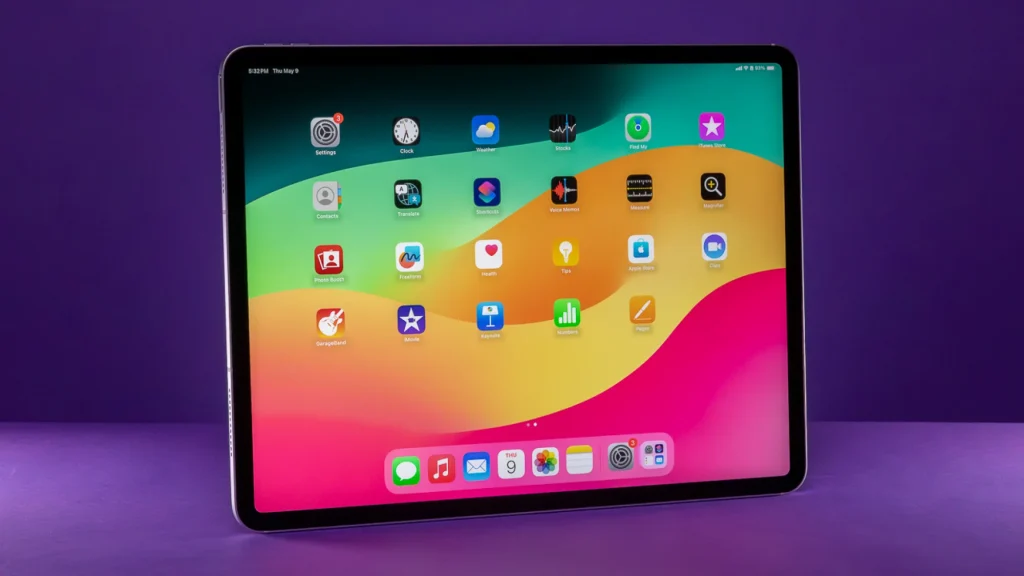
A technological marvel of the current day is Apple’s iPad Pro. It is a homage to Apple’s creativity and engineering prowess with its svelte form, strong hardware, and cutting-edge functionality. But in spite of all of these positive reviews, the iPad Pro’s software is a major drawback.
The Hardware: A Technological Marvel
The iPad Pro is equipped with a magnificent Liquid Retina XDR display, which provides unmatched brightness and color accuracy. For creative workers that require accurate colour representation for their work, this makes it ideal. The 120Hz refresh rate offered by Pro Motion technology guarantees responsiveness and fluid scrolling, improving the user experience all around.
The iPad Pro’s internal CPU, the M1 chip, is the same one that powers Apple’s MacBook Air and MacBook Pro. With desktop-class performance from this CPU, the iPad Pro can easily tackle demanding tasks like 3D rendering, video editing, and high-end gaming. The iPad Pro can also handle and store a lot of data because it has up to 2TB of storage and up to 16GB of RAM.
Another standout feature of the iPad Pro is its camera system, which includes a 12MP Ultra Wide front camera with Centre Stage that automatically keeps users in the frame when making video calls. There are two cameras on the back: a 12MP Wide and a 10MP ultra-wide camera that can take beautiful pictures and 4K videos. The iPad Pro’s LiDAR scanner adds even more value to augmented reality experiences, making it a flexible instrument for a range of uses.

The Software: A Constraining Factor
The iPad Pro’s software is what limits it, even with its amazing hardware. The iPad Pro’s operating system, iPadOS, is limited in its professional tool capability by having only some of macOS’s features.
The file management system is one of the main drawbacks. Even though iPadOS has improved recently with the addition of the Files app, macOS’s Finder still needs to improve. Users who need to manage enormous files and intricate folder structures may find it quite difficult to access a more traditional file system.
The ability to multitask is another limitation. While iPadOS allows users to run many apps at once with features like Split View and Slide Over, it is less strong and intuitive than multitasking on a Mac. For professionals who need to run many applications simultaneously, more than multitasking on the iPad Pro might be required.
The ability to multitask is another limitation. While iPadOS allows users to run many apps at once with features like Split View and Slide Over, it is less strong and intuitive than multitasking on a Mac. For professionals who need to run many applications simultaneously, more than multitasking on the iPad Pro might be required.
Furthermore, a lot of professional-grade macOS apps are either unavailable on iPadOS or have limited functionality. The iPad Pro lacks programs like Final Cut Pro, Xcode, and Logic Pro, which are necessary resources for developers, video editors, and music producers, respectively. This hinders professionals’ workflow and lessens the iPad Pro’s usefulness as a stand-alone tablet by forcing them to switch to their Macs for specific activities.
The Promise of iPadOS 16 and Beyond
With every release of the operating system, Apple aims to close the gap between iPadOS and macOS by adding new capabilities and enhancements. For example, iPadOS 16 offers improved multitasking with Stage Manager, enabling users to have overlapping windows and resize windows. Moreover, this version adds support for external screens up to 6K in resolution, making the experience more desktop-like.
Additionally, Apple has released new frameworks and APIs that enable developers to produce iPad apps with greater functionality and versatility. These initiatives show Apple’s dedication to improving the iPad Pro’s functionality for business use.
Conclusion
Hardware-wise, the iPad Pro is, without a doubt, Apple’s greatest creation. Its camera capabilities, design, processing power, and display are unparalleled. But the iPad Pro’s software still acts as a barrier, keeping it from realising its full potential as a professional tool.
It is hoped that as iPadOS develops further, Apple will solve these constraints and open up new possibilities for the iPad Pro. When software catches up to technology, the iPad Pro will continue to be a tremendous tool with unrealized potential.

Leave a Reply